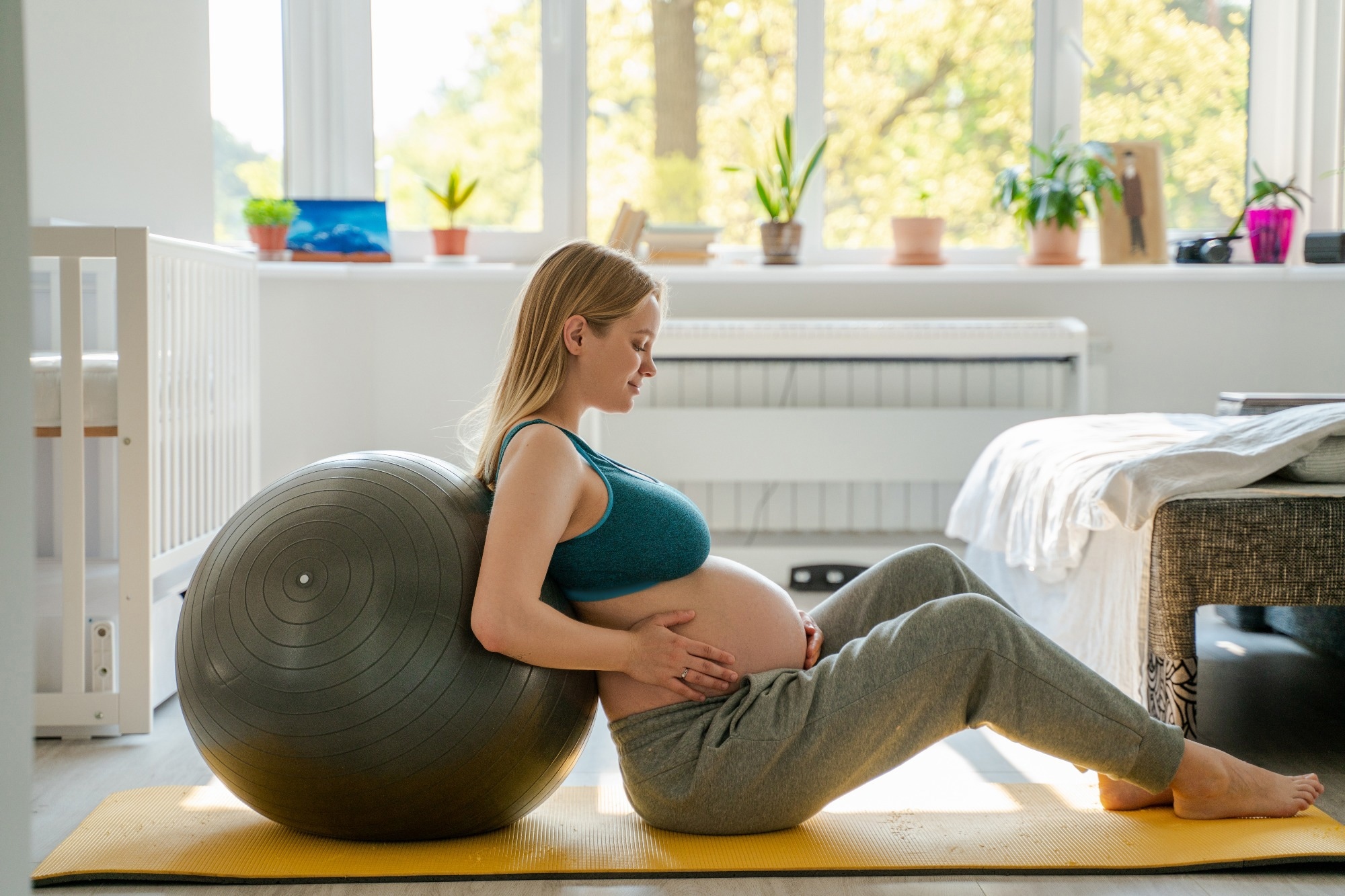Birthing and peanut exercise balls are two non-pharmacologic interventions that are frequently used during labor. Although midwives and nurses have been using birthing and peanut balls during labor since 1980, few studies have evaluated their effectiveness.
 Study: Birthing balls to decrease labor pain and peanut balls to decrease length of labor: what is the evidence? Image Credit: Marharyta Gangalo / Shutterstock.com
Study: Birthing balls to decrease labor pain and peanut balls to decrease length of labor: what is the evidence? Image Credit: Marharyta Gangalo / Shutterstock.com
Management of labor during childbirth
Increased maternal mobility and upright positioning are perceived to benefit women during labor. Upright positioning, otherwise known as squatting, during labor may widen the pelvic outlet, thereby assisting in optimal rotation of the fetus during the second stage of labor.
A computational model of the pregnant female pelvis demonstrated that the squatting position increases the transverse diameter of the pelvic outlet. The greatest increase in the diameter occurs during the descent from standing to squatting. Thus, maternal mobility and position changes can assist in the positioning of the fetus in the pelvis.
Widening the pelvic outlet during labor could reduce the duration of labor and promote natural vaginal delivery. A Cochrane systematic review indicated that as compared to recumbent positioning, upright positioning reduces the first stage of labor by one hour and 22 minutes and the relative risk (RR) of Cesarean delivery.
However, this positioning did not impact the duration of the second stage of labor. Nevertheless, another Cochrane review contradicted this finding and revealed that upright positioning decreases the length of the second stage of labor by six minutes.
The American College of Obstetricians and Gynecologists supports frequent changes in maternal position, even for women laboring with an epidural. Although epidural use in labor to control pain has been approved by the World Health Organization (WHO), it limits the ability to move freely and remain in an upright position. The optimal position for women laboring with an epidural is not clear.
Birthing ball
A birthing ball, which is also referred to as a Swiss ball, is a round plastic exercise ball that can be used for bouncing, sitting, and moving around during labor. This invention has been particularly useful for those laboring without an epidural.
A birthing ball potentially improves maternal comfort and allows pregnant women to perform pelvic mobility exercises, such as pelvic rotation and rocking back and forth, that widen the pelvic outlet to progress the labor.
Several randomized clinical trials (RCTs) have confirmed the safety and efficacy of birthing balls in reducing labor pain. To this end, a significant reduction in subjective pain scores was observed in the birthing ball group as compared to controls. Notably, no difference in labor duration was observed between the two groups.
One previous meta-analysis revealed that pain during active labor, on a scale of one to 10, was reduced by 1.7 points for those who used a birthing ball during labor as compared to those without a birthing ball.
Peanut ball
The peanut ball is another type of plastic birthing ball that is used instead of a traditional birthing ball for women laboring with an epidural, as this intervention can be used for limited mobility.
As the name suggests, this ball is elongated and pinched in the middle to resemble a peanut shell. This unique shape allows the ball to be positioned between legs during labor when lying in a lateral recumbent position after epidural placement.
The peanut ball offers bent-knee positioning, which resembles a squatting position, and facilitates optimal positional changes during labor. Several studies have indicated that the use of peanut balls reduces the length of labor and Cesarean delivery rates. However, some studies have contradicted this finding and reported no significant difference in the duration of the first stage of labor or total duration of labor with or without the use of a peanut ball.
One previous meta-analysis reported a 14% increase in the RR of vaginal delivery and a 20% decrease in the RR of Cesarean delivery in peanut ball users as compared to controls.
Another meta-analysis conducted in 2022 revealed a significant reduction in the first stage of labor for those who used peanut balls during labor as compared to controls. This meta-analysis also indicated an 11% increase in the possibility of vaginal delivery in the peanut ball group as compared to controls.
Conclusions
Limited evidence regarding the exact mechanism by which the peanut ball reduces the duration of labor and promotes vaginal delivery is currently available. However, the use of a peanut ball appears to resemble a squatting position, which increases maternal mobility in labor.
Journal reference:
- Grenvik, M. J., Coleman, L. A., & Berghella, V. (2023) Birthing balls to decrease labor pain and peanut balls to decrease length of labor: what is the evidence? American Journal of Obstetrics and Gynecology 228(5);1270-1273. doi:10.1016/j.ajog.2023.02.014